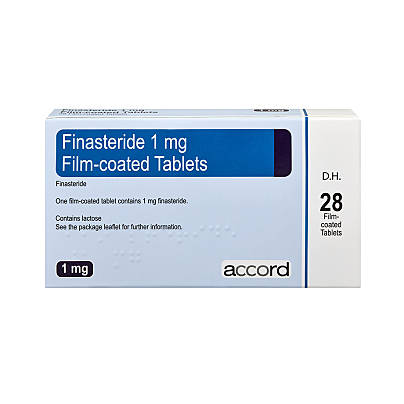Prices from £25.00
One of our doctors will review your order and prescribe a treatment if suitable. How to Order
We provide a fast, convenient, and discreet service that allows you to get a prescription for hair loss treatment.
Not sure if hair loss treatment is right for you? Keep reading to find out what causes hair loss and if treatment can help you.
Why choose us?
- No need to leave the comfort of your own home
- Order your treatment online quickly and easily
- Get a prescription for your chosen treatment
- Have your prescribed treatment delivered or pick it up from an Asda pharmacy
Hair loss treatments

No results found.
Please check your spelling or try another treatment name.




Hair Loss Treatment
-
-
There are 2 hair loss treatment options called finasteride and Propecia. They are the same except Propecia is a brand name and finasteride is a generic medicine. They work by stopping your body from making a hormone called dihydrotestosterone (DHT).
DHT can gather in the scalp and cause hair loss. By taking hair loss treatment tablets, the amount of this hormone that your body makes is lowered. So, there are low levels of DHT in the scalp and this stops hair from falling out.
-
-
In most cases, you will not see any noticeable results until 3 months have past. More obvious results can take up to 12 months to appear. If you see no improvements after 12 months you should talk to your doctor, who may be able to advise another option.
-
-
Clinical trials have shown that finasteride improved hair growth or maintained hair in 90% of men.
-
-
You should take one tablet a day with water. Try to take it at the same time every day. If you stop taking it, then you will start losing your hair again. The best way to stop yourself from missing a dose is to set an alarm to remind you to take it or use a daily pill box. If you take more than one by mistake, contact your doctor right away.
-
-
Usually, hair loss treatments are safe to use. As with any medication though, there can be some side effects.
Some common side effects of hair loss treatments include:
- trouble getting an erection
- trouble with ejaculation, like a lower production of semen
- low sex drive
If you get any of these side effects, you should speak to your doctor because they can continue even after you have stopped using hair loss treatments.
Less common side effects of hair loss treatments include:
- skin rash
- breast swelling or tenderness
- palpitations
- pain in your testicles
- anxiety
- depression
- itchy skin
If you notice any changes to how your breast tissue looks or feels, you should report this to your doctor right away. There is an increased risk of male breast cancer when taking finasteride. Finasteride has been linked with low mood, anxiety, and suicidal thoughts in some men. You should stop taking finasteride and see your doctor as soon as possible if you notice this.
-
-
You should tell your doctor if you are taking any other medication before being prescribed hair loss medication. They will make sure it is safe for you to take.
Unless your doctor says it is ok, you should not take hair loss treatments if you are:
- allergic to any of the ingredients it contains
- already taking finasteride or dutasteride
- a woman (finasteride is for men only)
Before using hair loss treatments, you should let your doctor know if you have:
- a large amount of residual urine in your bladder after you go for a pee
- a severely reduced urinary flow
- impaired liver function
- a sexual partner who is or could be pregnant
- a blood test called a prostate antigen or PSA test.
Finasteride is not known for interacting with other medicines and so it should be safe for you to take. But you should let your doctor know if you are taking any medication, including over the counter or herbal remedies.
Finasteride can be harmful to a developing baby. Tablets should not be handled by pregnant women, especially if they are broken or crushed. A small amount of finasteride can be found in the semen of men taking this, but it is at a level that is not felt to be harmful. This means you can continue to take finasteride when trying for a baby or if your partner is pregnant.
-
-
There are other options available to help combat hair loss. Some are medical treatments and others are non-medical, you may prefer to try the non-medical ones first.
Minoxidil: this is like finasteride in that it helps to stop hair loss. Unlike finasteride, minoxidil can be used to treat female pattern baldness. It is available in tablet and cream form.
Wigs: these are a common form of wearable hair for people who have partial or full hair loss. They can be man-made or made from human hair. Real hair wigs last longer than man-made wigs but they cost more.
Immunotherapy: a cream containing an allergen is applied to the affected area and stops the body attacking its own cells or hair follicles. It’s often used in cases of alopecia.
Steroid Injections: these are used to treat alopecia and they deliver a corticosteroid solution directly into bald patches. The amount you will need will depend on the size of the bald area and can vary from 2 to 50 injections.
Steroid Cream: like steroid injections, the cream delivers steroids to the bald area.
Tattooing: with this cosmetic treatment short hair and eyebrows can be permanently drawn onto the affected area.
Hair Transplants: a cosmetic surgery where hair is moved to an area where hair is thin or there is baldness. This type of hair loss treatment is expensive and usually only recommended for people with permanent baldness.
Light Treatment: low laser light therapy has been shown to be effective in both men and women and can stimulate hair growth. It’s believed that low-dose laser treatments improve circulation and encourage hair follicles to grow hair.
Scalp Reduction Surgery: Scalp reduction surgery is an invasive procedure where a surgeon cuts sections of skin affected by hair loss. A surgical flap of skin is then created using skin which is unaffected by hair loss. The flap is stretched over the bald area and stitched into place.
Lifestyle changes: There are some lifestyle changes you can make that may help improve hair growth.
Changes include:
- eating enough zinc and iron
- avoiding harsh chemicals particularly in shampoo and conditioners
- giving up smoking
- avoiding stress
- avoiding long-term sun exposure
-
-
Hair loss is normal. Most people lose between 50 and 100 hairs every day. It’s not usually something you should worry about but sometimes it can be caused by a medical condition.
Male and female pattern baldness is a type of permanent hair loss and usually runs in families. So, if a parent has it, then you might have it,too.
There are other causes of hair loss which can be temporary, such as:
- stress
- illness
- weight loss
- iron deficiency
- cancer treatment
Male pattern baldness affects around half of men over the age of 50 and is the most common type of hair loss in men.
Hair loss can also be caused by medical conditions including:
- thyroid disease
- alopecia areata (an autoimmune disease)

Dr Kathryn Basford is a qualified GP who works as a GP in London, as well as with ZAVA. She graduated from the University of Manchester and completed her GP training through Whipps Cross Hospital in London.
Meet our doctorsArticle created: 31 Aug 2021
Last reviewed: 31 Aug 2021
-
Finasteride 5mg Film-Coated Tablets: Package Leaflet (2019) EMC [Accessed 28 July 2021]
-
Hair Loss (2021] NHS [Accessed 28 July 2021]
-
Hair Transplant (2019) NHS [Accessed 28 July 2021]
-
Low Level Laser Therapy for Treatment of Hair Loss (2014) Lasers Surg Med [Accessed 28 July 2021]
-
Male Pattern Hair Loss (2019) BAD [Accessed 28 July 2021]
Order hair loss treatment online


GMC: 7074021

GMC: 6149061

GMC: 7085115









